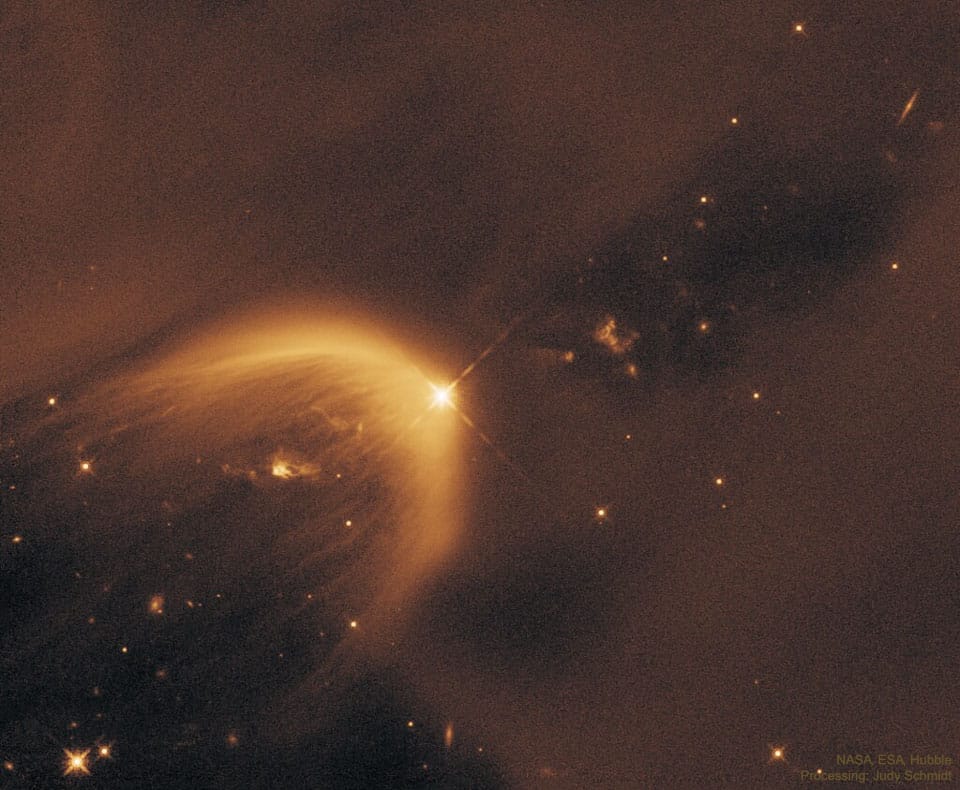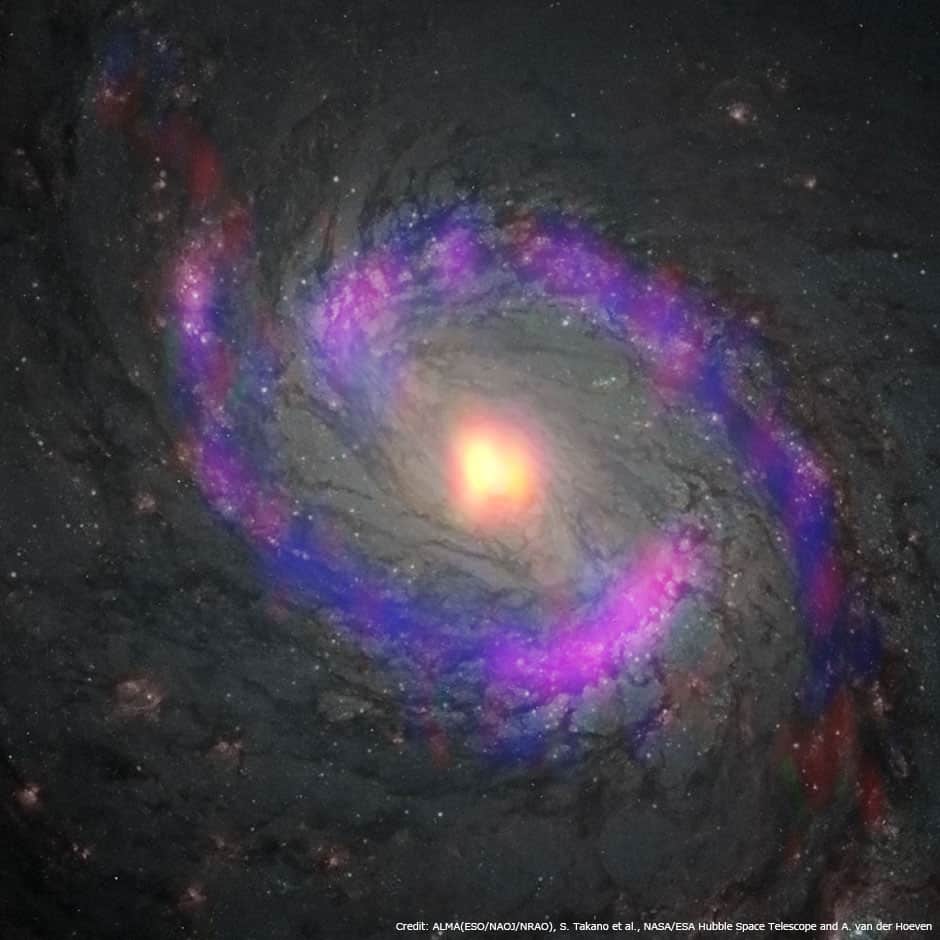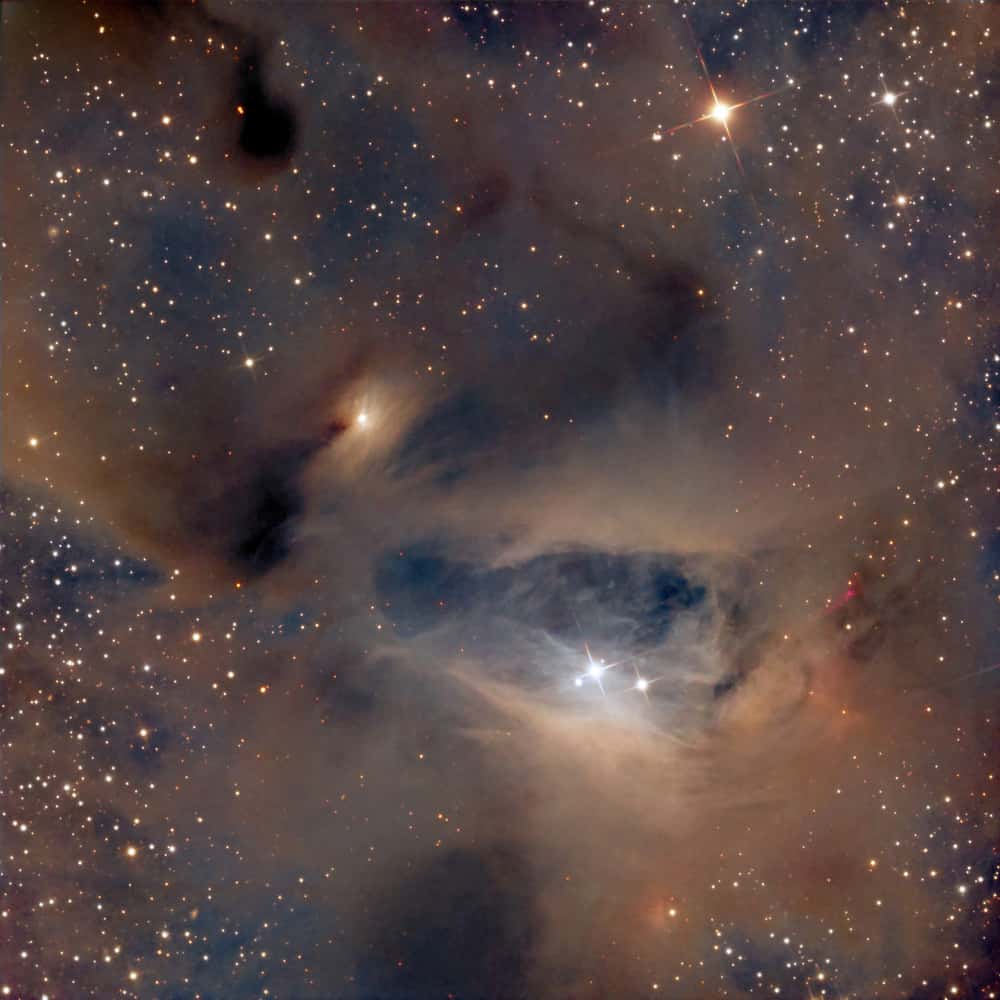Blog
What is the cause of this unusual parabolic structure? This illuminated cavity, known as LDN 1471, was created by a newly forming star, seen as the bright source at the peak of the parabola. This protostar is experiencing a stellar outflow which is then interacting with the surrounding material in the Perseus Molecular Cloud, causing it to brighten. We see only one side of the cavity — the other side is hidden by dark dust. The parabolic shape is caused by the widening of the stellar-wind blown cavity over time. Two additional structures can also be seen either side of the protostar, these are known as Herbig-Haro objects, again caused by the interaction of the outflow with the surrounding material. What causes the striations on the cavity walls, though, remains unknown. The featured image was taken by NASA and ESA’s Hubble Space Telescope after an original detection by the Spitzer Space Telescope.

Robert Clark Seger (/ˈsiːɡər/, born May 6, 1945) is an American singer, songwriter and musician. As a locally successful Detroit-area artist, he performed and recorded as Bob Seger and the Last Heard and Bob Seger System throughout the 1960s, breaking through with his first album, Ramblin’ Gamblin’ Man (which contained his first national hit of the same name) in 1968. By the early 1970s, he had dropped the ‘System’ from his recordings and continued to strive for broader success with various other bands. In 1973, he put together the Silver Bullet Band, with a group of Detroit-area musicians, with whom he became most successful on the national level with the album Live Bullet (1976), recorded live with the Silver Bullet Band in 1975 at Cobo Hall in Detroit, Michigan. In 1976, he achieved a national breakout with the studio album Night Moves. On his studio albums, he also worked extensively with the Alabama-based Muscle Shoals Rhythm Section, which appeared on several of Seger’s best-selling singles and albums.
A roots rocker with a classic raspy, powerful voice, Seger wrote and recorded songs that deal with love, women, and blue-collar themes and is an example of a heartland rock artist. Seger has recorded many hits, including “Night Moves“, “Turn the Page“, “Still the Same“, “We’ve Got Tonite“, “Against the Wind“, “You’ll Accomp’ny Me“, “Hollywood Nights“, “Shame on the Moon“, “Like a Rock“, and “Shakedown“, the last of which was written for the 1987 film Beverly Hills Cop II and topped the Billboard Hot 100 chart. Seger also co-wrote the Eagles‘ number-one hit “Heartache Tonight“, and his recording of “Old Time Rock and Roll” was named one of the Songs of the Century in 2001.
With a career spanning six decades, Seger has sold more than 75 million records worldwide, making him one of the world’s best-selling artists of all time. Seger was inducted into the Rock and Roll Hall of Fame in 2004 and the Songwriters Hall of Fame in 2012.[2][3][4][5] Seger was named Billboard‘s 2015 Legend of Live honoree at the 12th annual Billboard Touring Conference & Awards, held November 18–19 at the Roosevelt Hotel in New York. He announced his farewell tour in September 2018.
more...David Friesen (born May 6, 1942 in Tacoma, Washington) is an American jazz bassist. He plays double bass and electric upright bass. Friesen was an autodidact on bass, having picked it up while serving in the U.S. Army in Germany. He played with John Handy and Marian McPartland and following this, with Joe Henderson; in 1975, he toured in Europe with Billy Harper. His first album as a session leader appeared that year. In 1976, he began collaborating with guitarist John Stowell; the pair would work together often. He appeared with Ted Curson at the Monterey Jazz Festival in 1977. Following this, he worked with Ricky Ford, Duke Jordan, Mal Waldron, and Paul Horn. His 1989 album Other Times, Other Places reached No. 11 on the U.S. Billboard Top Jazz Albums chart. He has also played with Chick Corea, Michael Brecker, Stan Getz, Dexter Gordon, Kenny Garrett, Dizzy Gillespie, and Mal Waldron.
His sister is the actress Dyan Cannon
more...Eddie C. Campbell (May 6, 1939 – November 20, 2018) was an American blues guitarist and singer in the Chicago blues scene. Campbell was born in Duncan, Mississippi. He moved to Chicago at the age of ten, and by age 12 was learning from the blues musicians Muddy Waters, Magic Sam, and Otis Rush.
In his early years as a professional musician, he played as a sideman with Howlin’ Wolf, Little Walter, Little Johnny Taylor, and Jimmy Reed. In 1976, Willie Dixon hired him to play in the Chicago Blues All-Stars. Campbell’s debut album, King of the Jungle, featuring Carey Bell on harmonica and Lafayette Leake on piano, was released the next year.
In 1984, Campbell left Chicago for Europe, living first in the Netherlands and later in Duisburg, Germany, where he remained for ten years before returning to Chicago.
more...In this image, the heart of the spiral galaxy M77 observed by ALMA (Atacama Large Millimeter/submillimeter Array) is superimposed on a visible light image taken by the Hubble Space Telescope. The distribution of cyanoacetylene (HC3N) is shown in yellow; the distribution of carbon monosulfide (CS) in red; and the distribution of carbon monoxide (CO) in blue. Through ALMA observations, the existence of organic molecules concentrated around the supermassive black hole in the center of M77 was revealed for the first time.

Marija Šestić (Serbian Cyrillic: Марија Шестић; born 5 May 1987) is a Bosnian singer and musician. She is most known for representing Bosnia and Herzegovina in the Eurovision Song Contest 2007 in Helsinki, Finland. Performing the song “Rijeka bez imena” (“Nameless river”), Šestić collected a total of 106 points, placing eleventh out of twenty-four entries.
A pianist by trade, Šestić has achieved top results in domestic festivals and also had the chance to be the first artist from the former Yugoslavia to appear on MTV Europe. Marija attempted to reach Eurovision in 2005 and with the song “In This World”, she ended up in a respectable fourth place at the national final.
more...Stanley Cowell (born May 5, 1941) is an American jazz pianist and co-founder of the Strata-East Records label. Cowell was born in Toledo, Ohio. He began playing the piano at around the age of four, “and first became interested in jazz after gaining exposure to the music of pianist Art Tatum, a family friend”. “After high school, he attended both the Oberlin College Conservatory and the University of Michigan, during which time he also gained valuable experience playing with Rahsaan Roland Kirk“. He moved to New York in the mid-1960s.
Cowell played with Marion Brown, Max Roach, Bobby Hutcherson, Clifford Jordan, Harold Land, Sonny Rollins and Stan Getz. Cowell played with trumpeter Charles Moore and others in the Detroit Artist’s Workshop Jazz Ensemble in 1965–66. During the late 1980s Cowell was part of a regular quartet led by J.J. Johnson. Cowell taught in the Music Department of the Mason Gross School of the Arts at Rutgers, the State University of New Jersey.
https://www.youtube.com/watch?v=BJN-P-GFqOM
more...J. B. Lenoir /ləˈnɔːr/ (March 5, 1929 – April 29, 1967) was an American blues guitarist and singer-songwriter, active in the Chicago blues scene in the 1950s and 1960s.
His surname, which is French, is sometimes pronounced as the French “L’n WAHR”, but he pronounced it “La NOR”. His given name simply was J. B.; the letters are not initials.
He was born in Monticello, Mississippi. Lenoir’s guitar-playing father introduced him to the music of Blind Lemon Jefferson, which became a major influence. During the early 1940s, Lenoir worked with the blues artists Sonny Boy Williamson II and Elmore James in New Orleans. He was later influenced by Arthur Crudup and Lightnin’ Hopkins.
In 1949, he moved to Chicago, where Big Bill Broonzy helped introduce him to the blues community. He began to perform at local nightclubs, with musicians such as Memphis Minnie, Big Maceo Merriweather, and Muddy Waters, and became an important part of the city’s blues scene. He began recording in 1951 for J.O.B. Records and Chess Records. His recording of “Korea Blues” was licensed to and released by Chess, as having been performed by J. B. and his Bayou Boys. His band included the pianist Sunnyland Slim, the guitarist Leroy Foster, and the drummer Alfred Wallace.
more...Blind Willie McTell (born William Samuel McTier; May 5, 1898 – August 19, 1959 Thomson, GA) was a Piedmont blues and ragtime singer and guitarist. He played with a fluid, syncopated fingerstyle guitar technique, common among many exponents of Piedmont blues. Unlike his contemporaries, he came to use twelve-string guitars exclusively. McTell was also an adept slide guitarist, unusual among ragtime bluesmen. His vocal style, a smooth and often laid-back tenor, differed greatly from many of the harsher voices of Delta bluesmen such as Charley Patton. McTell performed in various musical styles, including blues, ragtime, religious music and hokum.
McTell was born in Thomson, Georgia. He learned to play the guitar in his early teens. He soon became a street performer in several Georgia cities, including Atlanta and Augusta, and first recorded in 1927 for Victor Records. He never produced a major hit record, but he had a prolific recording career with different labels and under different names in the 1920s and 1930s. In 1940, he was recorded by the folklorist John A. Lomax and Ruby Terrill Lomax for the folk song archive of the Library of Congress. He was active in the 1940s and 1950s, playing on the streets of Atlanta, often with his longtime associate Curley Weaver. Twice more he recorded professionally. His last recordings originated during an impromptu session recorded by an Atlanta record store owner in 1956. McTell died three years later, having suffered for years from diabetes and alcoholism. Despite his lack of commercial success, he was one of the few blues musicians of his generation who continued to actively play and record during the 1940s and 1950s. He did not live to see the American folk music revival, in which many other bluesmen were “rediscovered”.
McTell’s influence extended over a wide variety of artists, including the Allman Brothers Band, who covered his “Statesboro Blues“, and Bob Dylan, who paid tribute to him in his 1983 song “Blind Willie McTell“, the refrain of which is “And I know no one can sing the blues like Blind Willie McTell”. Other artists influenced by McTell include Taj Mahal, Alvin Youngblood Hart, Ralph McTell, Chris Smither, Jack White, and the White Stripes.
https://www.youtube.com/watch?v=ds1xVHsXm7Y&list=PLA1E19F781AE40709
more...Idir, one of the greatest voices of Algerian Kabyl (Berber) music died May 3, 20230 in Paris from pulmonary disease. The passing was confirmed on his official Facebook page.
Idir was born on October 25, 1949 in what was then French Algeria. He became a musician in 1973 and one of the most passionate supporters of Kabyl music abroad. In 1975 he moved to France, where he recorded his debut album.
more...Alto saxophone great Richie Cole once referred to in Downbeat magazine as “the sax machine,” has died at the age of 72. Cole died on May 1 at his home in Carnegie, Pa., a suburb of Pittsburgh. His daughter Annie Cole said he died in his sleep, of natural causes.
Richie Cole was a prolific composer who has recorded over 50 albums with the likes of Eddie Jefferson, the Manhattan Transfer, Bobby Enriquez, Freddie Hubbard, Sonny Stitt, Art Pepper, Tom Waits, Boots Randolph, and Nancy Wilson. He performed at the historic Village Vanguard and Carnegie Hall. Cole even gave a command performance for Queen Elizabeth II.
Years ago, the prominent jazz critic Leonard Feather noted Cole’s lively and informal presentations and “the free-wheeling and sometimes satirical nature of his performances.” The website About Jazz says Cole “is the last of a breed — a fast and competitive musical gunslinger acquiring legendary status for his willingness to demonstrate his command of Charlie Parker’s bebop language by taking on all comers at any speed.”
“I like to trick people into liking jazz by keeping things friendly, upbeat, and familiar,” stated Cole, who represented a musical link that runs from bebop’s founder Charlie Parker and innovator Phil Woods to the present. Woods — who married Parker’s widow — taught at a summer performing arts camp in New Hope, where he met the young Cole and became his mentor. The two eventually joined in recording an album, “Side by Side.”
https://www.youtube.com/watch?v=O68mjlTeoBM
more...At a distance of about 450 light years(140 parsecs) away, it is located within the Taurus-Auriga Star Forming Region.

CW Tauri
Sonny Payne (May 4, 1926 – January 29, 1979) was an American jazz drummer, best known for his work with Count Basie and Harry James.
Payne’s father was Wild Bill Davis‘s drummer Chris Columbus. After early study with Vic Berton, in 1944 Payne started playing professionally around New York with the Dud and Paul Bascomb band, Hot Lips Page, Earl Bostic (1945–1947), Tiny Grimes (between 1947 and 1950), and Lucille Dixon(1948).
From 1950 to 1953, Payne played with Erskine Hawkins‘ big band, and led his own band for two years, but in late December, 1954, he made his most significant move, joining Basie’s band for more than ten years of constant touring and recording. He was originally asked only to temporarily fill in for Basie’s ailing regular drummer, but Payne’s flashy style was such a hit that he was immediately hired to be Basie’s permanent drummer.
more...More Posts
- The Cosmos with NGC 2024
- Ernest Dawkins Day
- Keith Emerson Day
- Phil Woods Day
- World Music with Jitka Šuranská
- Daily Roots with Ras Midas
- The Cosmos with C/2013 A1
- Lyle Lovett Day
- Lou Donaldson Day
- Sippie Wallace Day
- World Music with Paco de Lucia
- Daily Roots with Ras Ibuna & Jah Woosh
- Happy Halloween 2019
- The Cosmos with Sharpless 103
- Ali Farka Touré Day
- Tom Paxton Day
- Booker Ervin Day
- Illinois Jacquet Day
- World Music with Vusi Mahalasela
- Daily Roots with Delroy Butler